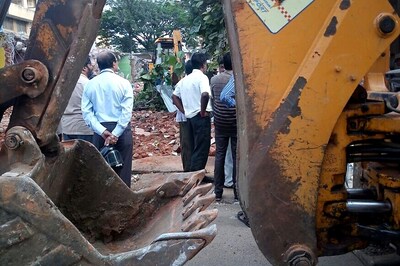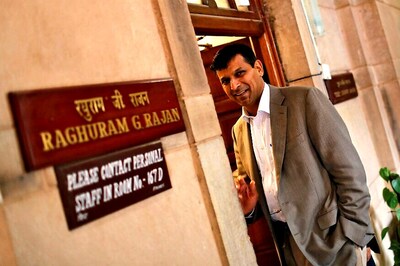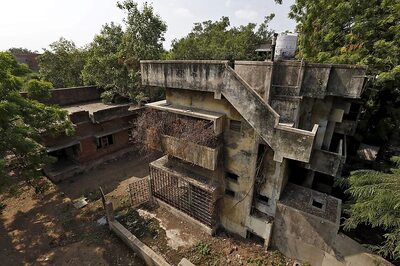
views
How would you describe India’s train stations, say, 10 to 15 years ago? Smelly, unclean, chaotic and shabby would perhaps be some of the words that zoom past your mind. They reeked of an old India and even symbolised our country around the world to an extent. The fact that India became the butt of a joke internationally for people defecating on train tracks was the direct consequence of perennial policy paralysis at the governmental level. That was an India where the lack of proper infrastructure had been normalised to a great degree. People had almost submitted to the fact that modernisation was an alien concept for the Indian Railways. Today, the situation has taken a dramatic turn for the better. The transformation of Indian Railways is but a mere microcosm of the larger change underway in the country.
Prime Minister Narendra Modi on Monday laid the foundation for over 550 Amrit Bharat stations across the country. These stations aim to enhance facilities by developing rooftop plazas and city centres, with an allocated budget of Rs 40,000 crore. The Prime Minister also laid the foundation stone of nearly 1,500 road overbridges and underbridges during a function that was conducted virtually at over 2,000 railway stations. So far, 1,318 stations have been selected under the Amrit Bharat Station Scheme based on proposals received from zonal railways and stations located in major cities and towns.
The Amrit Bharat Station Scheme has been launched for the development, modernisation and beautification of railway stations across the country. It has a long-term vision for the ongoing development of stations. The creation of master plans and executing them in phases to enhance various station facilities will be taken up on a priority basis under the scheme. The enhancements include bettering station accessibility, waiting areas, washroom facilities, lift and escalator installations as needed, cleanliness, offering free WiFi and setting up kiosks for local products through initiatives like ‘One Station One Product’.
Railways will also undertake enhancement of passenger information systems, establish executive lounges, designate spaces for business meetings, incorporate landscaping and focus on beautification. The redevelopment will vary from station to station, as each one of them has subjective and specific requirements that will be addressed under the Amrit Bharat Station Scheme.
The scheme focuses on upgrading station structures, integrating stations with the surrounding city areas on both sides, promoting multimodal connectivity, providing facilities for individuals with disabilities (Divyangjans) and implementing sustainable and eco-friendly solutions. The introduction of ballastless tracks and incorporation of ‘roof plazas’ will also be taken up as part of the scheme. The ultimate goal is to transform these stations into vibrant city centres over the long term.
It is no secret that arriving at train stations can be a big hassle due to congestion and lack of proper road connectivity. Therefore, to ensure smooth access, the scheme will facilitate the widening of roads, removal of unwanted structures, use of properly designed signages, dedicated pedestrian pathways, well-planned parking areas and improved lighting.
Once the redevelopment work of these stations is complete, Indians will have a profoundly different experience of travelling in trains. The smelly, unclean and dilapidated state of railway stations has already been reduced to a great extent, and with the redevelopment programme on, Indians will soon have modern and well-equipped train stations at their disposal. Already, Indian Railways has equipped more than 6,000 railway stations with free WiFi services.
Interestingly, while modernisation is the larger and most prominent theme of the Amrit Bharat Station Scheme, the Modi government has also decided to touch base with India’s ancient heritage as the redevelopment process kicks off. The Indian Railways had advised all its zonal public relations offices to ensure that the plaques for the event on Monday were designed in Sanskrit, apart from Hindi, English and vernacular languages.
The Making of a New Indian Railways
The move to redevelop train stations is part of a larger push by the Modi government to overhaul Indian Railways and make it a modern, safe and clean mode of public transportation. Today, Indian Railways is fast replacing the traditional Integral Coach Factory (ICF) coaches with the advanced Linke Hofmann Busch (LHB) coaches. According to the statement issued by the Ministry of Railways, a total of 23,000 conventional coaches have been successfully replaced by their LHB counterparts since 2015. LHB coaches boast a range of advanced features, including an anti-climbing arrangement, secondary air suspension with a failure indication system, and a corrosion-resistant shell. Their biggest USP is that they are much safer compared to older ICF coaches.
Similarly, India now boasts of more than 100 Vista Dome coaches crisscrossing the country on different scenic routes. Vista Dome coaches are all-weather glass-ceiling AC coaches that are used on scenic routes with the goal of boosting tourism and all-round travel experience.
The goal is to populate Indian tracks with Vande Bharat trains and LHB coaches. In fact, Vande Bharat trains will soon not just be a luxury that only the better-off classes of people enjoy. The Railways are preparing to introduce Vande Bharat sleeper trains, with the prototype already completed and trials scheduled to commence in April.
Focus has been laid on making train travel much safer. The railways have spent more than Rs 1 lakh crore on the renewal and upgradation of critical safety assets in the last five years alone. As a result, accident rates plummeted by 70 per cent since 2014, from 117 to a mere 34 in 2022. The elimination of all unmanned level crossings in 2019 by the Railways has further made train journeys safer for all travellers, apart from those who commute and pass through railway crossings on a daily basis.
The Amrit Bharat Station Scheme promises a paradigm shift in India’s railway landscape, transcending the grim realities of the past toward a future defined by modernisation, accessibility, and cultural pride. As Prime Minister Modi spearheads this ambitious initiative, it not only signifies infrastructural upgrades but also a reconnection with India’s heritage, exemplified by the inclusion of Sanskrit in commemorative plaques. This initiative, complemented by the introduction of advanced coaches and safety measures, reflects a holistic vision to revolutionise Indian Railways.
Views expressed in the above piece are personal and solely that of the author. They do not necessarily reflect News18’s views.




















Comments
0 comment